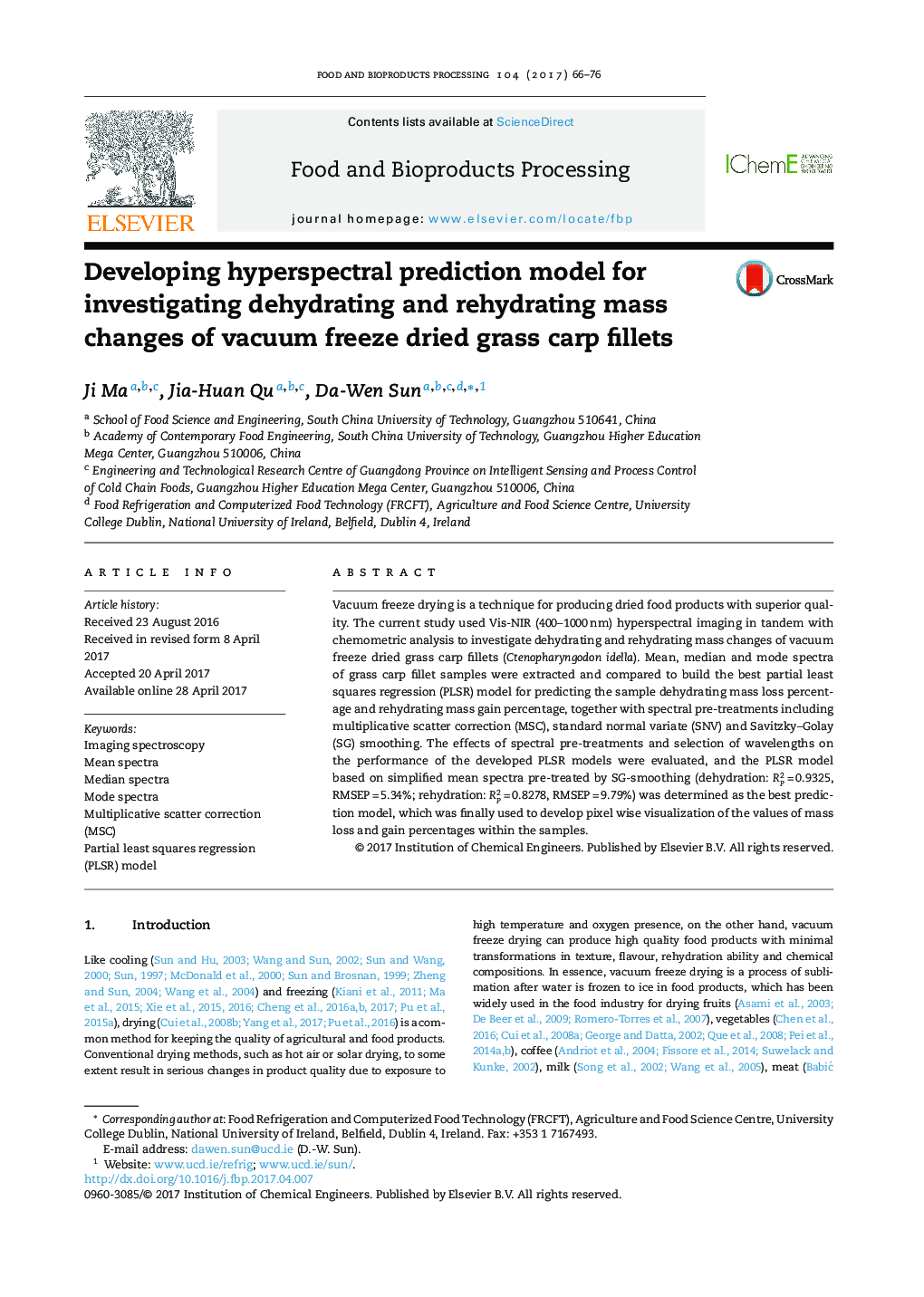| Article ID | Journal | Published Year | Pages | File Type |
|---|---|---|---|---|
| 4752934 | Food and Bioproducts Processing | 2017 | 11 Pages |
â¢HSI was used to predict dehydrating and rehydrating features in dried fish slices.â¢Mean, median and mode spectral features were compared in PLSR model improvement.â¢MSC, SNV and SG-smoothing were used and compared in spectral pre-processing.â¢The important wavelengths were selected from different spectral profiles by RC.â¢Distributional maps were produced for predicting mass loss and gain percentage.
Vacuum freeze drying is a technique for producing dried food products with superior quality. The current study used Vis-NIR (400-1000Â nm) hyperspectral imaging in tandem with chemometric analysis to investigate dehydrating and rehydrating mass changes of vacuum freeze dried grass carp fillets (Ctenopharyngodon idella). Mean, median and mode spectra of grass carp fillet samples were extracted and compared to build the best partial least squares regression (PLSR) model for predicting the sample dehydrating mass loss percentage and rehydrating mass gain percentage, together with spectral pre-treatments including multiplicative scatter correction (MSC), standard normal variate (SNV) and Savitzky-Golay (SG) smoothing. The effects of spectral pre-treatments and selection of wavelengths on the performance of the developed PLSR models were evaluated, and the PLSR model based on simplified mean spectra pre-treated by SG-smoothing (dehydration: RP2Â =Â 0.9325, RMSEPÂ =Â 5.34%; rehydration: RP2Â =Â 0.8278, RMSEPÂ =Â 9.79%) was determined as the best prediction model, which was finally used to develop pixel wise visualization of the values of mass loss and gain percentages within the samples.
